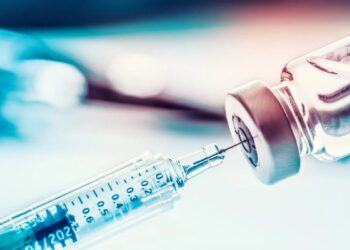Researchers have shed light on the genetics behind changes in the structure and shape of the face and head in the syndrome
In an article published today in Development, researchers found that the presence of a third copy of the gene Cultivate 1a and at least three other genes are responsible for these changes that occur during development – called craniofacial dysmorphology – and which involve a shortening of the length of the skull and face from back to front and a widening of the diameter of the head. Down syndrome, which affects 1 in 800 live births, is known as “gene dosage disorder“, that is, it involves changes in the number of copies of a gene. People with Down syndrome have three copies of chromosome 21 instead of two. The presence of three copies of some genes on this chromosome causes the typical aspects of Down Syndrome, but it is not yet known which genes are responsible. Using genetic engineering, teams led by Victor Tybulewicz of the Francis Crick Institute and Elizabeth Fisher of University College London have created strains of mice with duplications of three regions on chromosome 16, which mimic the presence of a third chromosome 21. Mice have many traits typical of Down syndrome, including changes in the shape of the face and skull. Previous research has linked a gene called Cultivate 1a to aspects of Down syndrome; therefore, the researchers wanted to verify its impact on craniofacial dysmorphology. In collaboration with Jeremy Green’s group from King’s College London, they showed that mice with an extra copy of Dyrk1a had a reduced number of cells in the bones of the front of the skull and face. Also, the cartilaginous joints at the base of the skull, called chondrosis, were abnormally merged. These effects were partially reversed when the third copy of Dyrk1a was removed, demonstrating that three copies of Dyrk1a are required to cause these changes in the skull. Researchers believe that the presence of a third copy of Dyrk1a hinders the growth of neural crest cells, which are needed to form the bones in the front of the skull. In addition to Dyrk1a, research has shown that three other genes also contribute to skull changes, but more research is needed to confirm their identities.
Future treatments
Victor Tybulewicz, Group Leader of the Down Syndrome Laboratory at the Crick, who worked with first author Yushi Redhead, said: ‘Understanding the genetics involved in the development of the head and face gives us clues about other aspects of Down syndrome, such as heart disease. Because Dyrk1a is so central to craniofacial dysmorphology, it is highly likely that it is also involved in other changes in Down syndrome.” Jeremy Green, professor of developmental biology at King’s College London, said: “With the help of great collaborators from the University of Calgary in Canada and a medical imaging software group here at King’s, we’ve been able to apply both traditional methods and very innovative methods to compare complex anatomical shapes. These methods were sensitive enough to detect differences even in fetal stages. This has helped us pinpoint not only the location of the genes that cause Down syndrome, but also gain clues about how these genes cause the differences they cause.” The researchers will then aim to identify genes involved in heart defects and cognitive impairment, thus moving closer to understanding how to develop targeted treatments for the aspects of Down Syndrome that impact health.

Too long a siesta is connected to: increased risk of obesity, metabolic syndrome and arterial hypertension

Alaska: Researchers thought it was a bear bone, but it was from a woman




